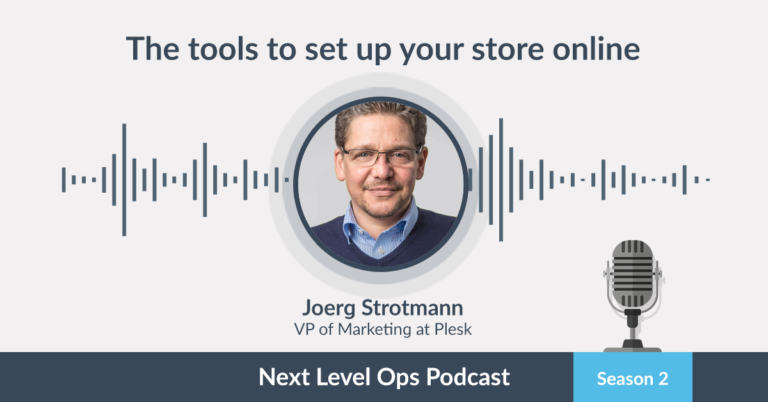
What is CloudOps? Glad you asked! It may sound like a shady government department operating at the fringes of the law, all dark suits, and dark glasses, but it’s slightly less dramatic than that. It is related to ‘cloud operations’ which is a phrase that acts as an umbrella term for things like networking, security, performance, managing devices, customer help, and basically, any and all of the myriad things that go towards maintaining cloud-native apps and keeping them working, along with the infrastructure they rely on.
There are those that say CloudOps is just an offshoot of ITOps, by which they mean that it’s another part of what an organization’s IT department takes care of. But actually, it’s much more than that, and it would be closer to the mark to say that CloudOps is something ‘separate but related’ that speeds up and enhances an organization’s processes by applying IT operations and DevOps principles to a cloud-based architecture.
CloudOps goes beyond ITOps because apps and data management in the cloud have specialized requirements including more up-to-date skills, tools, and technologies. CloudOps’ primary goal is to maximize uptime, completely eliminating service outages for seamless operation. As more and more organizations and increasing numbers of business models come to rely almost exclusively on 24/7 cloud access, the old adage that ‘time is money’ has never been truer. These days, downtime can seriously dent users’ trust and mean that you quickly shed customers.
That knowledge has been one of the driving forces behind the rise of cloud engineers. These CloudOps professionals have both the technical and business savvy to ensure that a business has the right tools for the job, which means providing enough servers and making the right apps available within the cloud environment.
Cloud engineers need to think proactively, anticipating needs and provisioning to ensure that problems don’t arise down the line. For example, if a storage provision was underperforming then a cloud engineer would shunt data to a different system to uncork that particular bottleneck before it could become a more serious problem.
CloudOps is also at the forefront of security, possessing the level of automation that can post warnings and block IP addresses as required. Today’s user expects to be able to access cloud-based services seamlessly, with data delivered as quickly as if it was on their own machine, and that is what CloudOps ensures happens.
How Does CloudOps Differ From DevOps?
DevOps is a set of practices that blends software development and IT operations. Its goal is to shorten the systems development life cycle and offer continuous delivery with high software quality.
DevOps is a way of doing things that helps IT operations and teams of developers dovetail their work efforts. Part of this involves procedures and practices that help to shorten development cycles for organizations, cut down on the time it takes to get their products to market, and continually make their software better. Combining all of these processes reduces downtime to an absolute minimum, thanks to better service quality and keeps customers happy.
So what is CloudOps in comparison? Well, it is the set of best practices and procedures that help successfully move systems to the cloud, to take advantage of its power and scalability. Essentially, CloudOps is about facilitating automatic software delivery, app management, and server management using the cloud.
What Are Some CloudOps Functions?
An organization’s CloudOps team needs a variety of skills that encompass IT operations and related teams, DevOps teams, business app operation teams, and cloud service providers.
CloudOps’ overall aims are to:
- Maintain cloud service and infrastructure availability
- Fine-tune capacity and performance
- Match space and resources to budget (because a business should only be paying for what it truly needs)
- Satisfy service-level agreements
- Manage compliance and configuration
- Maintain comprehensive recovery and mitigation measures
How Do Organizations Get To Grips With CloudOps?
It varies, but it’s probably fair to say that certain organizations have ventured into cloud operations using cloud-native tools that support deployment, provisioning, operations, and optimizations. That said, while most are attempting to juggle diverse cloud configurations—like multi- and hybrid-cloud models—the majority don’t grasp the necessity of CloudOps until they are maybe 50% of the way through the migration process before they discover that traditional ITOps are not ideal for managing it.
How Do You Achieve Continuous Operations In The Cloud?
Continuous operations are definitely not exclusive to the cloud but in that environment, the correct CloudOps procedures and best practices are needed to avoid unscheduled outages and other hiccups. With automated provisioning and self-provisioning, organizations can establish dual redundant systems that keep everything functioning during software updates and system failures.
As well as redundancy, the cloud allows for abstraction and management software that enables systems to circumvent things like update-related glitches. These include:
- Cloud management platform (CMP) tools capable of automating continual operations along with conducting repairs as necessary. CMP tools can fix problems in storage, network devices, and other systems doing so behind the scenes so that users won’t even know that something was amiss.
- Analysis and monitoring tools for private and public clouds, which hunt for problems, collate system information, then call up automatic responses to head off mishaps before they can happen.
Despite all this, the main thing to remember is, there is no single ‘magic bullet’ tool that can help you maintain 100% uptime. Instead, it requires various different tools and approaches.
Here is what to consider when developing a CloudOps approach:
- Work out which apps and which data sets will be better off in the cloud
- Create and update a deployment plan that will prevent system and app updates from tripping up your operations and which will significantly reduce or totally do away with unexpected downtime
- Use your cloud platform’s automatic ability to create redundant services
- Choosing CloudOps tools, such as monitoring and CMP
Will The Cloud Make Operations Easier?
Yes, the cloud will do that—but it takes the right approach to management. Thoughtfully tailored cloud resources can really boost operations. Flexible, scalable, and cost-effective, continually improving and automating operations, the cloud is a positive force for change within any outfit. But that’s not to say that CloudOps hands all of this to you on a plate. It isn’t something that you can just tack on to your current DevOps systems. If you use in-house and cloud systems, you will need a thorough audit regime to identify the best practices for managing all that complexity.
How Is a CloudOps Environment Managed?
It requires its own IT team that includes security, IT, cloud services, compliance, and other experts and this is something that more and more businesses are embracing.
Here are some extra best practices for CloudOps to mull over.
Get the right cloud migration strategy
- Prepare well: changing the entire business requires management buy-in, risk assessments, comprehensive planning, and budgeting.
- Write a checklist: Which sets out everything that your organization needs and the particular challenges posed to its infrastructure. List every requirement so that your team can still meet business goals throughout the migration.
- Find the cloud solution that best suits your organization: Public, private, or hybrid? A private cloud gives you full control of your systems, data, and security. Public clouds may offer more security risks, but the transition is much more straightforward.
- Visualize the network infrastructure: Implementing CloudOps will be much easier if you understand how the various systems and data sets interrelate and provide value. Once you’ve nailed down what you need it should make it easier both for you and the cloud solution provider to select the most appropriate one(s).
- Map your network infrastructure: This one’s common sense. You need to know exactly what’s in your network if you’re going to have any hope of shifting it all to the cloud!
Instigate a change of culture
- It’s a paradigm shift: You’ll need to get everybody to buy into the move to the cloud, and that means getting them to ditch possibly cherished ways of doing things that no longer fit. You’ll need to get everyone up to speed on the changes and the benefits that they will bring.
- Understand maintenance requirements: Teams will need to collaborate on troubleshooting and compliance issues with cloud vendors. CloudOps uses virtual servers which means maintaining them with the provider’s own tools.
Empower Users
- Streamline processes: Give tools to end-users that enable them to launch services and apps without assistance from IT. This frees CloudOps folks to focus on doing what they do best.
Security Automation
- Set up automatic security testing: You need to know that as your cloud architecture scales it remains watertight. Automated testing for security vulnerabilities achieves that.
- Think about secure storage and migration: closely monitor who is accessing data and use encryption widely.
- Purchase security tools: greater accessibility means greater risk so it’s well worth investing in the right security tools to avoid breaches. Ransomware, industrial espionage, crypto-jacking, and many more nefarious practices could bring your business to its knees, but whatever those security tools cost, you can bet that not using them will cost you more!
- Enable server remediation: Sometimes servers get misconfigured and your team will need access to fix them.
What Benefits Or Opportunities Does CloudOps Offer?
Cloud-based platforms offer scalability, simplicity, flexibility, tolerance, and boosted automation. To achieve all of that on your own premises would be prohibitively expensive, and probably impossible.
DevOps gets the most out of cloud computing providing cost-effective solutions with greater security and reliability. The upsides include:
- Value for money: No need to buy, configure and maintain hardware that may be superseded, and no need to spend a fortune on keeping it running non-stop either.
- Scalable and flexible: Any time you need more or less storage or processing power from your cloud provider, you can dial up or dial down to meet your current requirements.
- Automation: Cloud computing allows you to provision infrastructure, create builds, run quality tests, produce reports, automate processes, and speed up the time it takes to get products to market.
- Disaster resilience: Natural disasters could destroy your in-house server farm but cloud services keep copies of everything you do in multiple locations, so short of the world ending, your data will be safe.
- Always available operations: Update and deploy software with no breaks in service.
CloudOps will take all of these generally available benefits of cloud computing and optimize them to the specific requirements of your organization.
What challenges does CloudOps pose?
Watch out for spending more than you intended, and be aware of possible governance issues.
- Overspending: It’s estimated that almost one-third of cloud budgets get wasted because companies are paying for resources that they aren’t using or that they’re managing inefficiently. Avoiding this kind of thing is one of the reasons why CloudOps is so important.
- Governance: Quick scaling and rapid deployment are convenient but with so many processes and workloads on the go at once, some of them may get away from you.
How do you Begin your CloudOps journey?
You’ll need a platform that integrates everything in your infrastructure, with a dashboard that lets cloud admins respond to maintenance and security needs across an entire multi-cloud environment. You’ll also need to enact robust governance policies so that nobody is using or fiddling with anything that they shouldn’t.
What will CloudOps look like in the future?
CloudOps is becoming more and more necessary as the majority of apps become cloud-based. That means greater complexity that needs to be managed effectively, which is what CloudOps is all about. It simplifies compliance and makes adopting a variety of services from several vendors easier to facilitate. The cloud will only become more complex, which means that CloudOps will only become more necessary, and with the success of organizations resting on it, not just necessary but essential.
Conclusion
If your organization has moved fully or partially to the cloud and gone more or less serverless, you’re doing well but that’s only half the battle. Now you need to employ CloudOps to fully understand and manage the particular requirements of your cloud users and apps. There are a lot of moving parts and processes to be scaled and automated. Self-provisioning, remediation, and the full suite of CloudOps tools will be needed to squeeze every last drop of value and efficiency out of your company’s cloud move.






